A proper soil for Snake plant is critical to grow healthy Snake plants. It makes all the difference in the health of this tropical, desert plant.
Even though Snake Plants are very easy to care for they do require a well draining potting soil. Dry and well drained soil encourages healthy roots and a happy indoor plant.
What kind of Soil Does A Snake Plant Need?
Ideal soil mix for Snake Plants are light, well draining soil blends designed to keep the roots oxygenated and free of clinging wet soil. Cactus and succulents soils have adequate drainage and work well for snake plants.
Sansevierias leaves and rhizomes are designed to hold water for the plant. When the soil is dry and well drained, the plant roots can breathe easily and feed the plant what it needs.
Heavy organic potting soil can smother and rot sansevieria roots since excess water cannot drain away. Use a well-drained, well aerated soil with coarse sand in it. Be sure it also has some organic soil components like compost or peat moss to feed the plant.
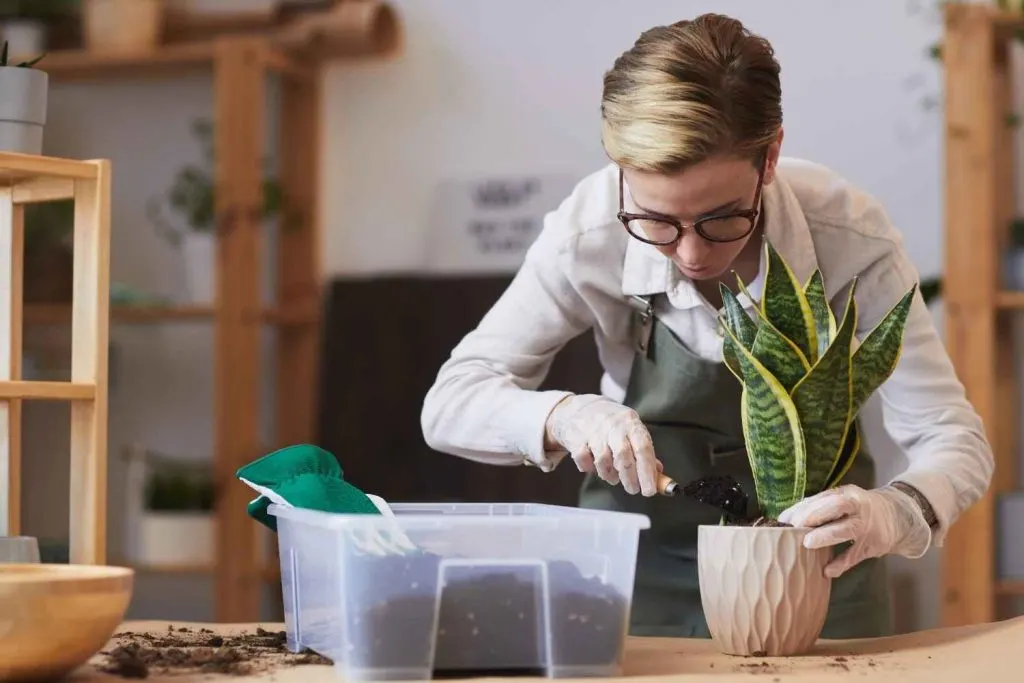
Snake plants are popular houseplant for beginner plant for new plant parents. They make wonderful indoor houseplants.
Snake plant benefit as air purifiers are well known. They are tolerant of neglect and various levels of lighting. Sansevierias are good choices for a bedroom plant since they give off oxygen at night while you sleep and improve air quality.
Saneveriearias are hardy plants native to the dry regions of Western and Southern Africa. They can take care of themselves mostly. However, sansevierias Achilles heel is root rot. A correct soil mix is very helpful in keeping this plant healthy.
What are the signs of problems in snake plants?
Droopy leaves, mushy, cracking or yellowing leaves on your sansevieria plants are signs of plant root distress. The soil is likely holding too much water and causing root problems.
Read our posts on Seven Reasons Your Plant has Yellowing Leaves for more ideas on why your plant has yellowing leaves.
The thriving plant pictured below has healthy leaves and roots. The leaves are vibrantly colored, firm and growing. The roots are light colored and firm. Mushy dark roots indicate root rot. Learn how to fix root rot in this post.
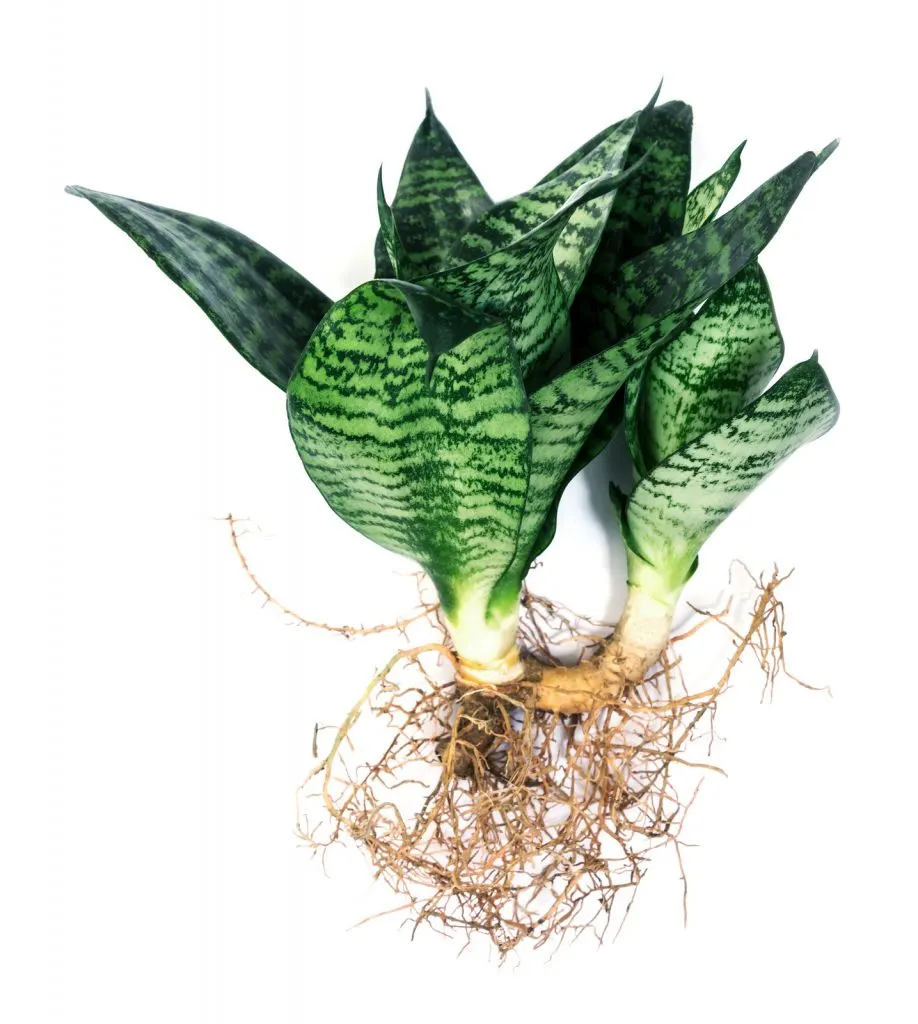
While the plant is unpotted, evaluate the soil conditions. If it is a good soil mix, then over watering is most likely your problem.
Incorrect soil and poor watering habits unfortunately often work together to sabotage the health of your snake plant.
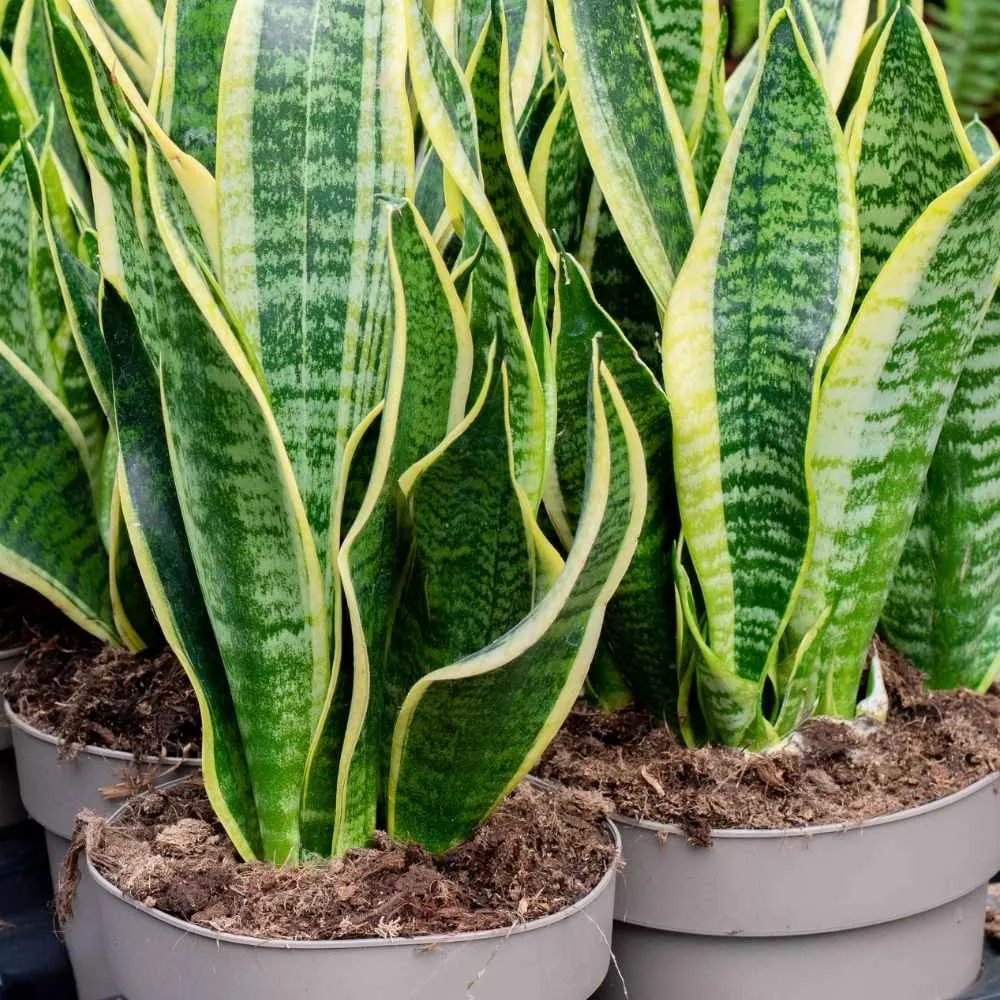
How Do You Know If Your Snake Plant is in Good Soil?
Regular Potting soils designed to hold water are not good for snake plants. Large scale Plant nurseries often plant all their plants in a soil mix designed to hold water. This helps plants survive shipment and reduces watering needs in the nursery.
Heavy mixes with a lot of organic materials are dangerous for most succulents like snake plants. Heavy dense soils hold water close to the roots for long periods of time.
When you purchase a snake plant, examine the soil. Heavy wet soils smother the delicate roots and cause root rot. Your plant may need a repot into a proper succulent plant potting mix
As we discuss in depth in our Snake Plant Watering Post, overwatering snake plants is deadly to them.
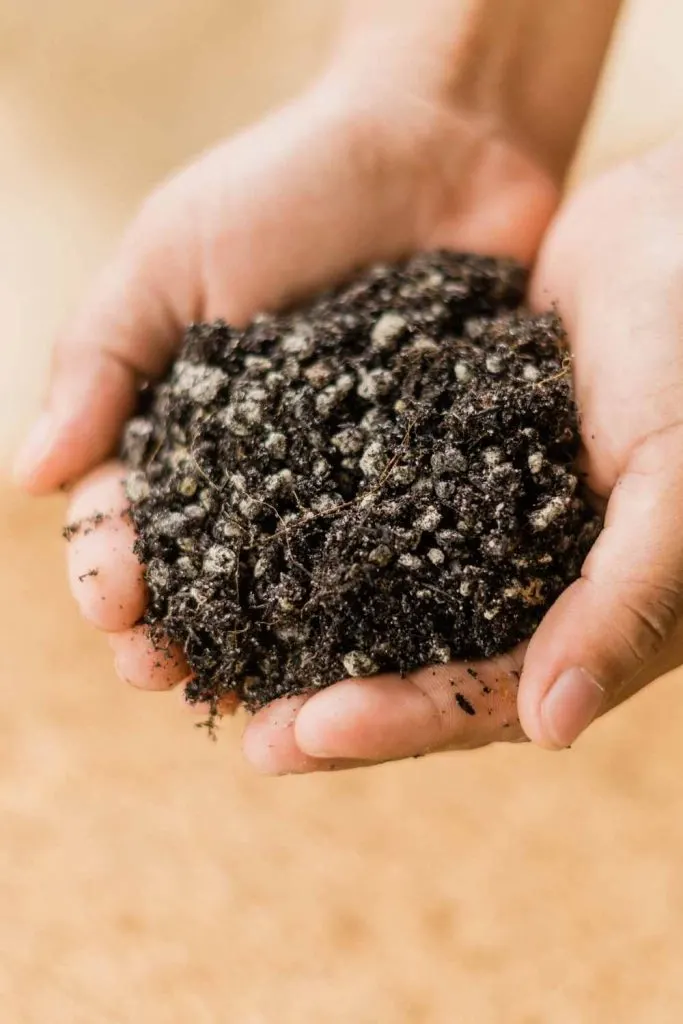
What is a Good Snake Plant Soil Mix?
Snake plant soil mixes should be crumbly and well draining. Any succulent/cactus soil will work for these plants.
Here is a page of succulent soil mix you can purchase on Amazon. These all keep water draining away from the roots which is ideal for snake plants.
Snake plants are a type of succulent. Succulent or cactus soil mixes will provide good drainage for them.
Here is a page of succulent soil mix you can purchase on Amazon. These all keep water draining away from the roots which is ideal for snake plants.
Making your Own Snake Plant Soil:
In the video below Kayti is propagating snake plants and she goes over the soil mix recipe for snake plants and their care needs.
You can easily create your own soil mix using a general potting mix or even sterile garden soil. However, You do need to mix in some amendments to create a good soil mix for these succulents.
What is in a good snake plant soil mix? Snake plant soil should contain inorganic materials for drainage, Organic materials for soil resilience and garden soil or potting mix to feed the plant and hold it all together.
Soil Materials for Snake Plants:
Here is the proper materials and the ratios you need to put together a good soil mix for snake plants.
- 1 part inorganic matter
- 2 parts organic materials
- 3 parts garden soil or potting mix.
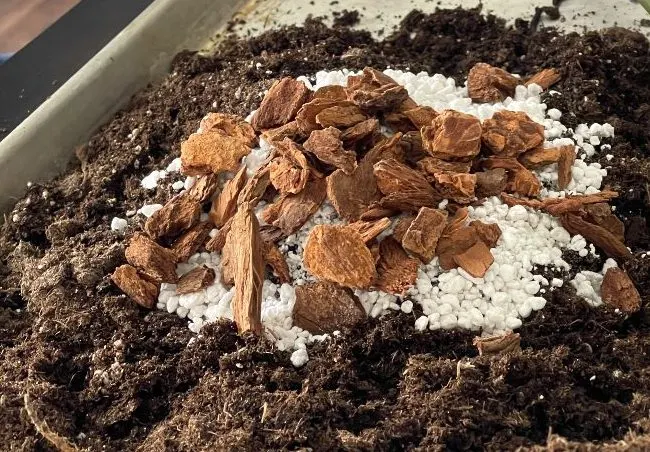
Mix these materials in the proportions recommended above in a large container.
Test Your Soil Texture:
If you have a good mix of both organic and inorganic soil amendments, the soil will have some structure but mostly crumble. This is well draining nutritious soil mixture that promotes a good root structure and feeds the plant.
- Wet the plant soil
- Pick up a small handful of the soil.
- Squeeze it in your hand.
- Open your hand. Is it a wet clump of solid soil? Add more inorganics.
- Does the soil crumble when your hand opens? Perfect. As long as it has some structure. You can’t grow a snake plant in pure sand. 🙂
Storing and Reusing Your Homemade Soil Mixes:
Store your extra homemade soil recipes in airtight containers or ziplock bags for future repots. Be sure to label the container so you know which plant this type of soil is blended for.
Can you reuse snake plant soil? You can reuse snake plant soil if you sterilize it before reuse. Sterilize the soil by placing it on a baking sheet and baking at 200 degrees F for about an hour.
After you sterilize potting soil you can refresh is with new soil amendments to create new blends for whatever plants you are growing.
Preferred Snake Plant Pots:
When you have a good basic soil mixed for your snake plant, be sure to place it in a pot with drainage holes and of the proper size. The pot needs to fit the root ball.
The Nursery container it came in usually has good drainage. If you choose to use that you can place it in a larger lovely non draining cover pot with a layer of gravel under the nursery pot so it can avoid wet feet.
When snake plants are potted in planters too large for their roots, even well draining soils can rot them. This is true because too much excess water remains in the pot after you give it a good soak for too long a time.
The plant roots cannot use all that water so it sits in the pot and provides opportunity for root rot pathogens and viruses that attack the roots and sicken the plant. Use a pot that fits the root system.
When you repot a snake plant go up just to the next size pot so the roots can grow but not rot in overly moist soil.
What Pot Material is best for Snake Plants?
Choose a pot that wicks water away from the soil. A Terracotta pot is good at pulling excess moisture away from soils. Plastic pots will work but do not breath like cotta pots do.
The pot you choose MUST drain.
Water drainage in pots is Critical for snake plants. Most pots do have a drainage hole but if you find the pot you want without one, make your own drainage hole so excess moisture can escape.
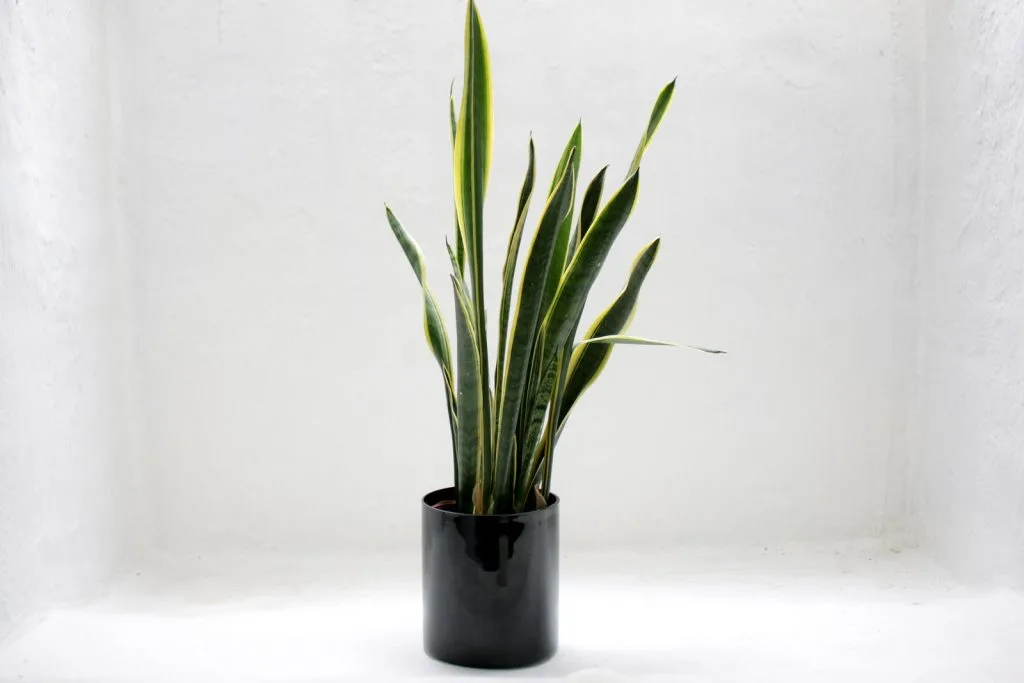
More On Snake Plant Care:
Be sure to read our in depth guide to snake plant care, our snake plant watering post to learn proper watering methods for your plant. And our post on propagating this plant.
Once you have a good potting soil, proper pot, and learn how to water your sansevieria correctly you will have a happy snake plant.
plant soil mixes should be crumbly and well draining. Any succulent/cactus soil will work for these plants.
Watch Kayti propagate and discuss snake plants in this video.
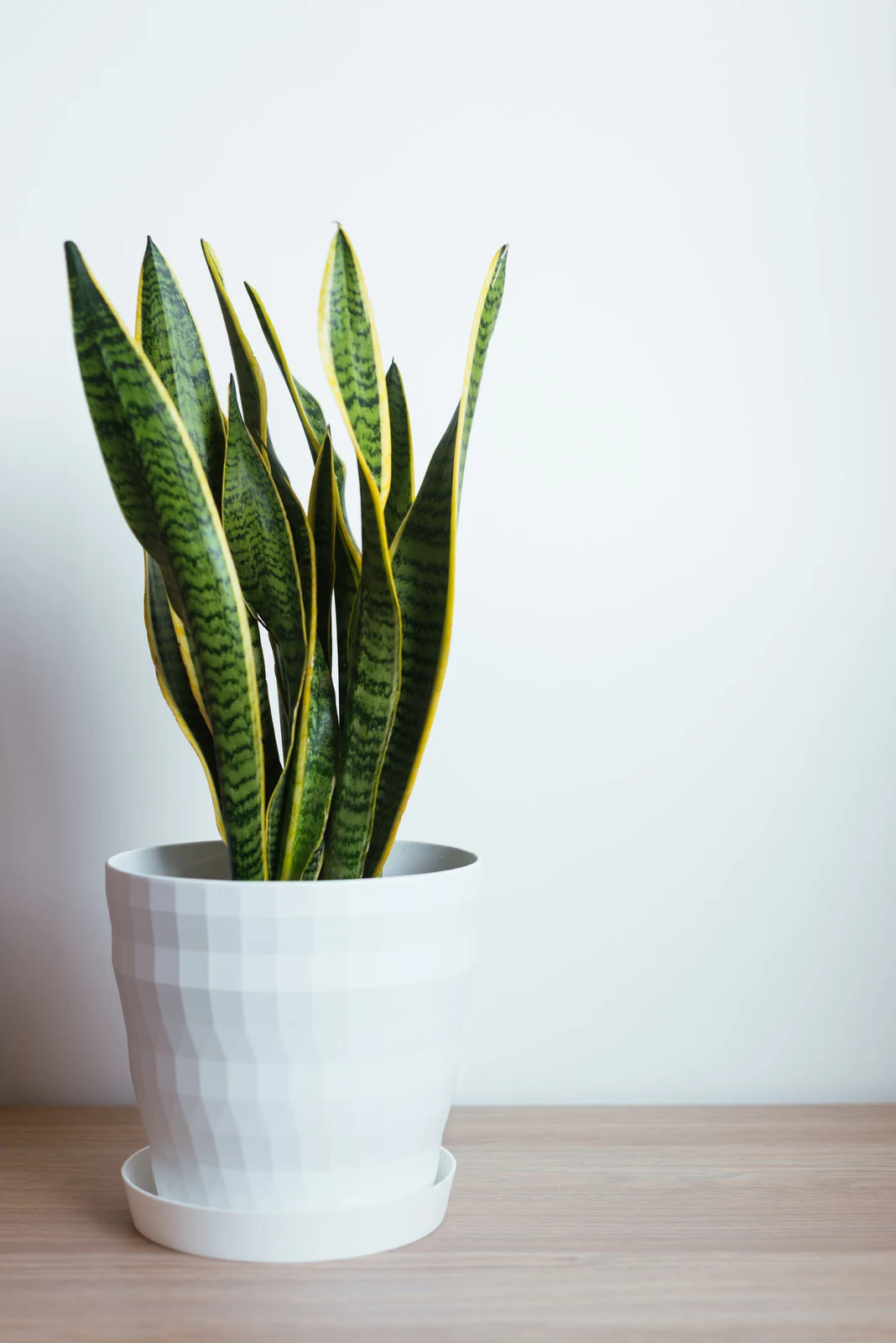
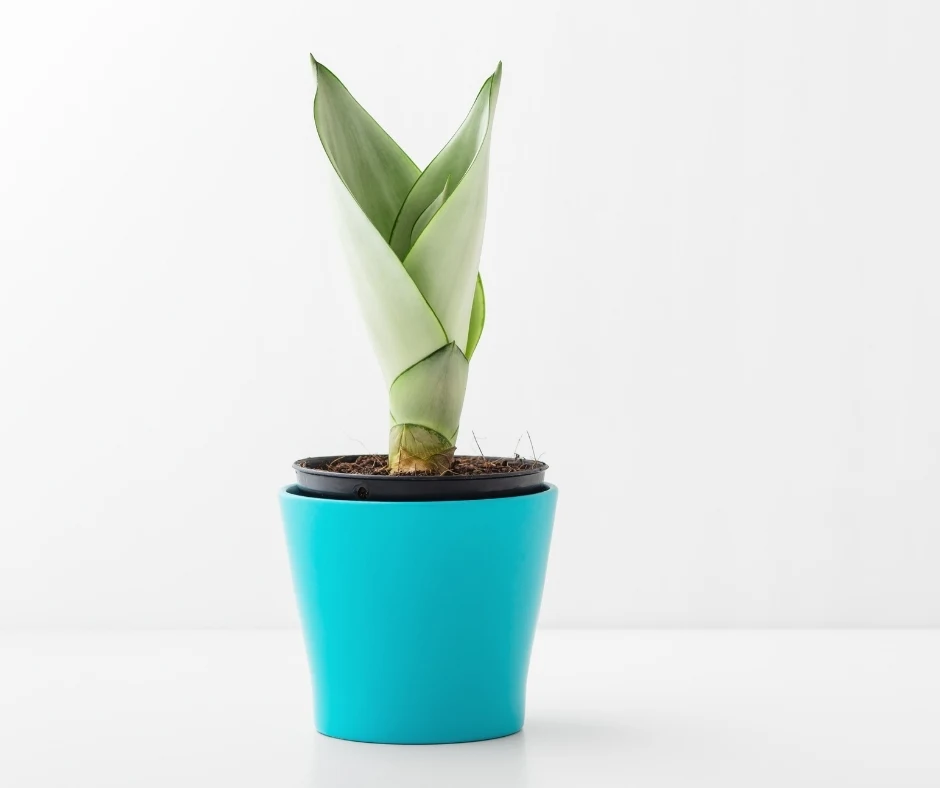
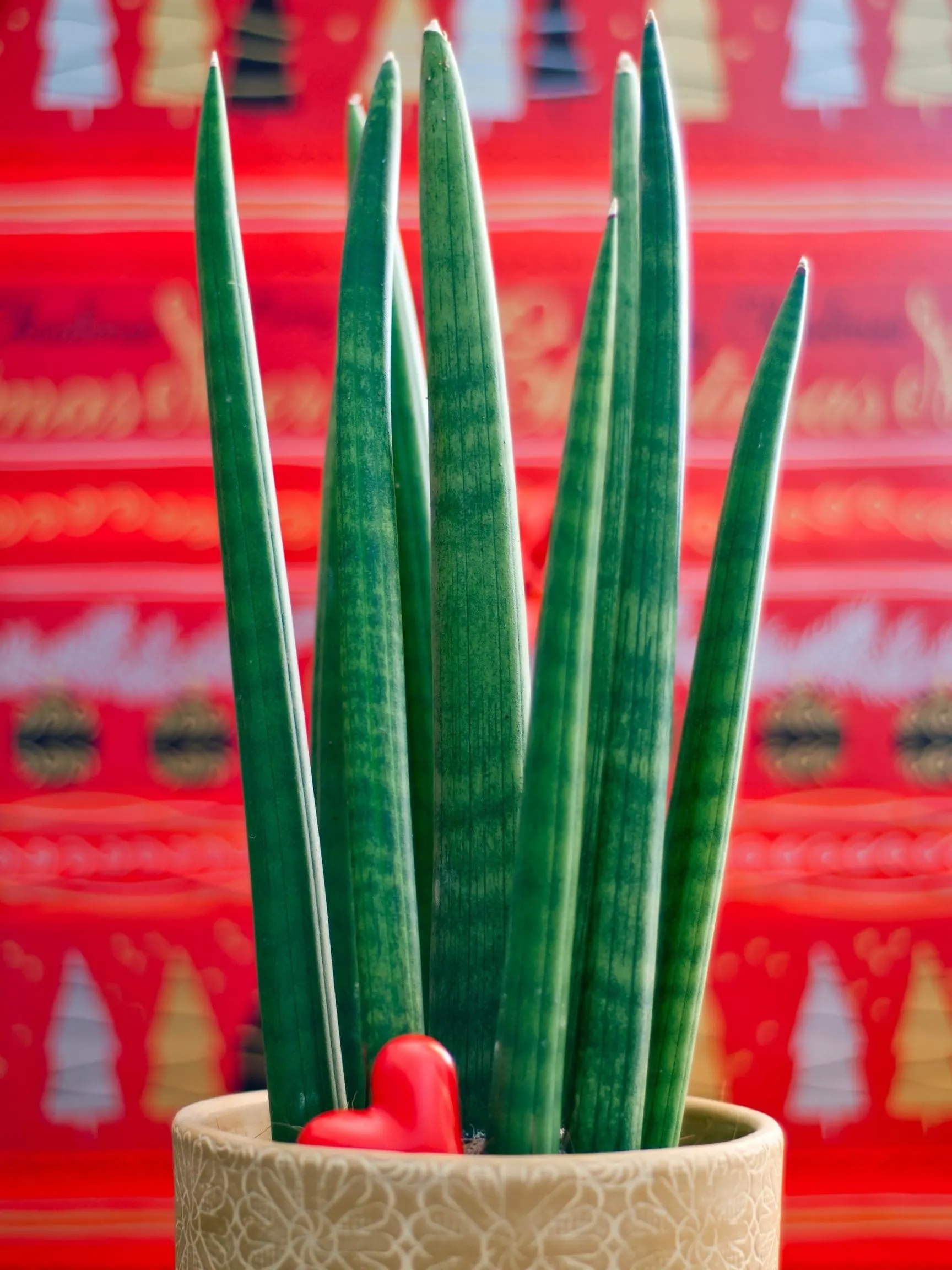
Follow Us:
Find us on YouTube, Instagram , Pinterest and TikTok! We love to Plant chat. We also comment, like and occasionally share your content to our daily stories. We’d love to see your plants. Share your joy in your houseplants. Happy Planting!
- 5 Fantastic Cactus Species for Your Home
- Pygmy Date Palm Trees
- Bromeliad Care Guide and Profile
- Growing Gloxinia Plants in Your Home
- Staghorn Ferns Care and Maintenance
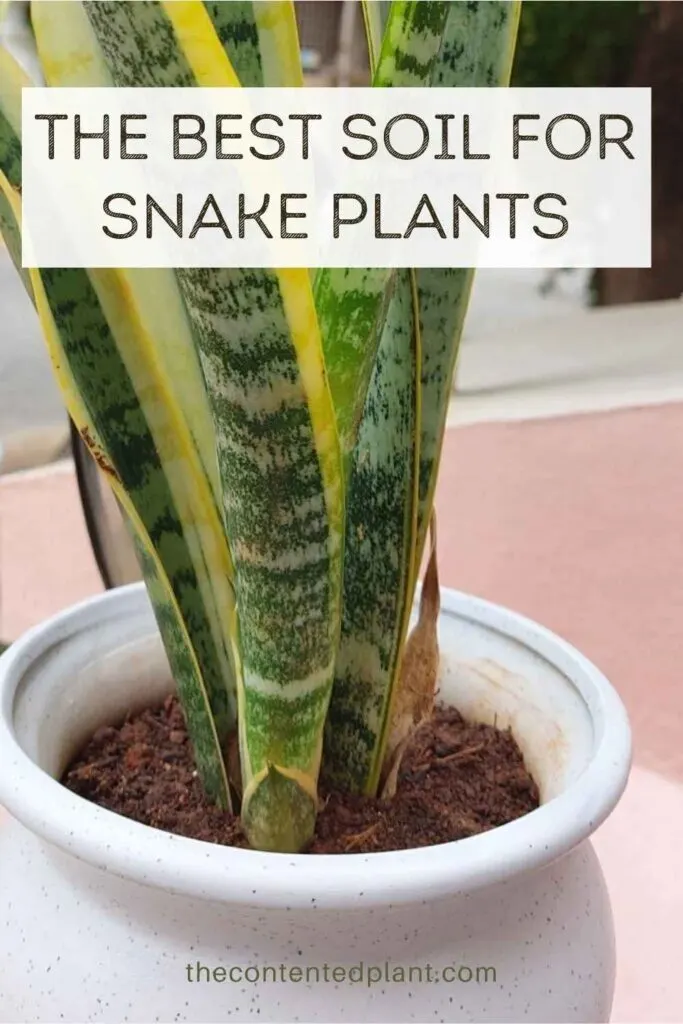

Signs That Your Houseplant Needs to be Repotted - The Contented Plant
Saturday 6th of January 2024
[…] The best soil for Snake Plants […]
Best Succulent Soil Mix - The Contented Plant
Friday 21st of October 2022
[…] Read our Posts on watering Snake Plants and soil mixes for snake plants. […]
Why Is My Plants Soil Not Drying Out Fast? This is What Expert Says About It - All Things Gardener
Monday 1st of August 2022
[…] to contentedplant, well-draining soil blends are ideal for Snake Plants […]
Sansevieria Cylindrica Plant Care Guide and Profile - The Contented Plant
Saturday 23rd of April 2022
[…] Or you may have an incorrect soil mix for snake plants. We teach you how to make a proper snake plant soil mix in this post. […]
Mold On Plant Soil-Is it harmful? How to Kill It - The Contented Plant
Sunday 6th of March 2022
[…] The Best Snake Plant Soil Mix […]